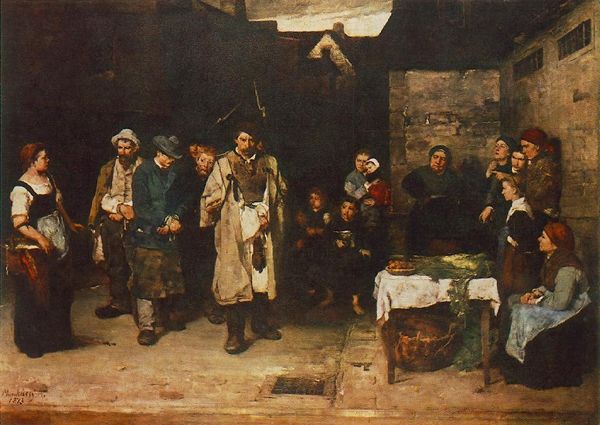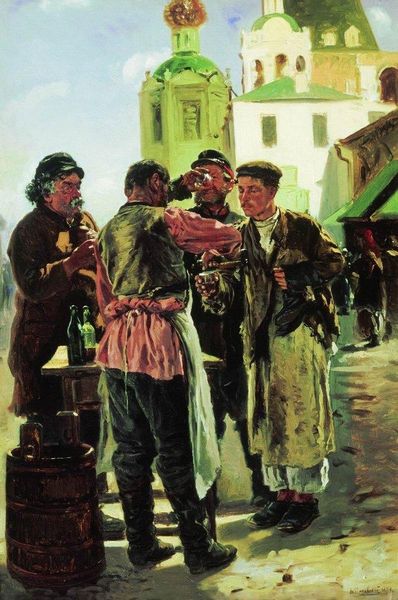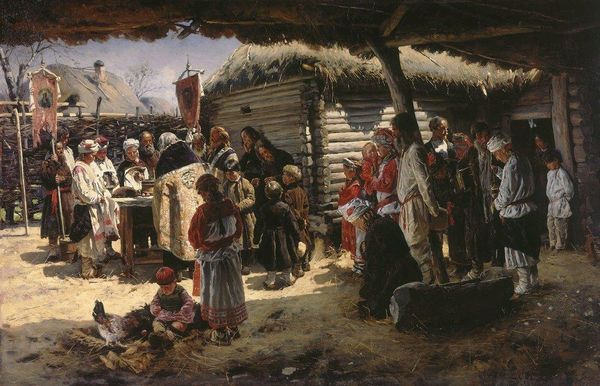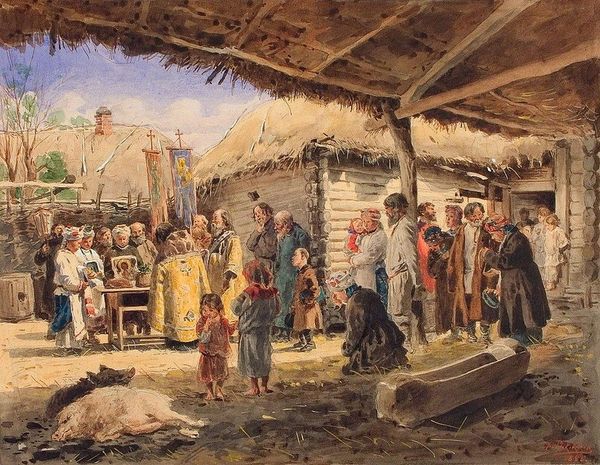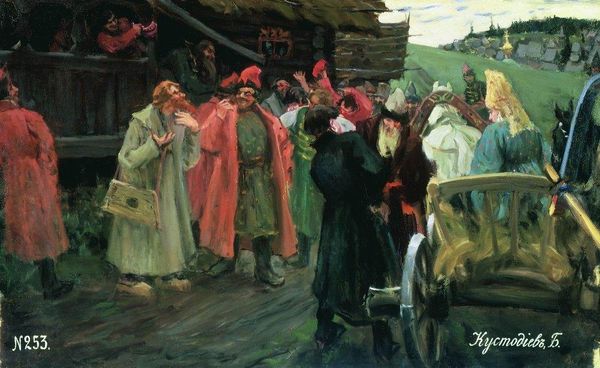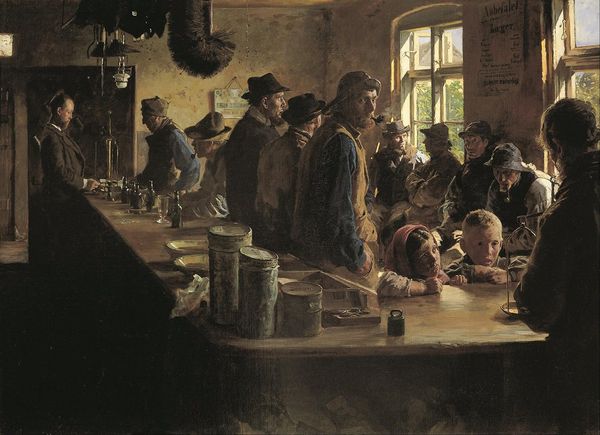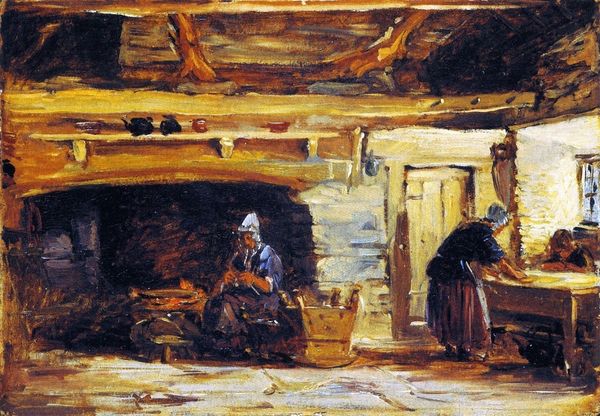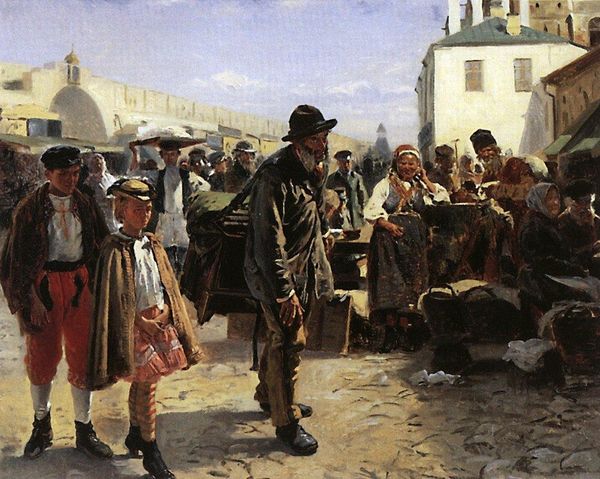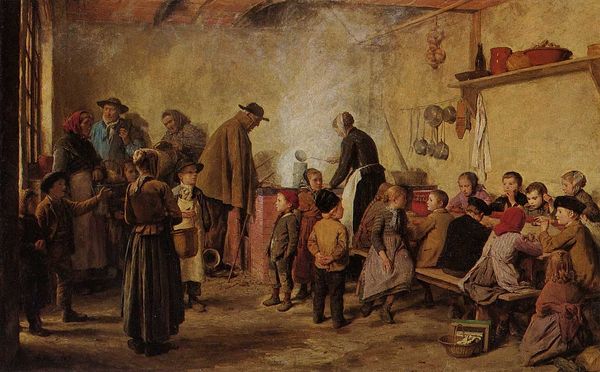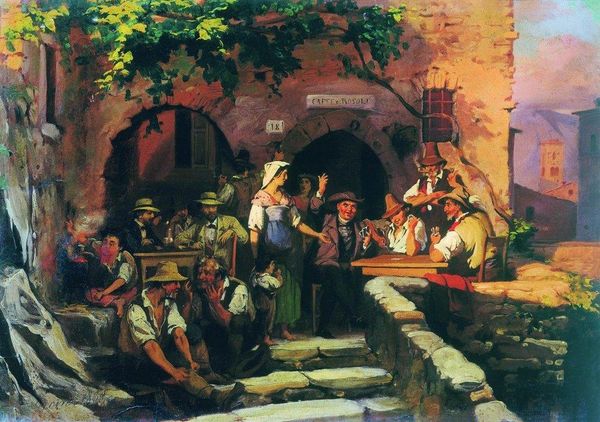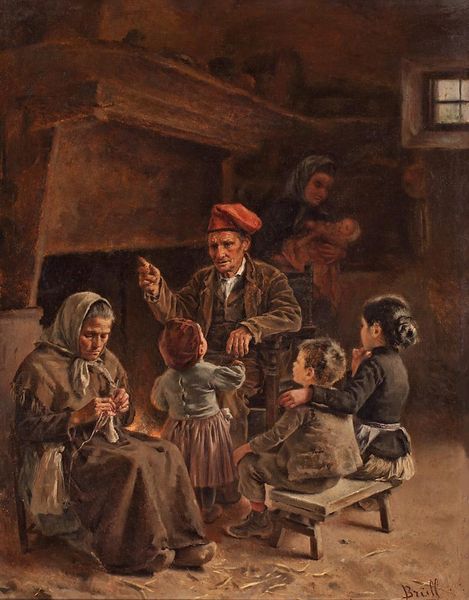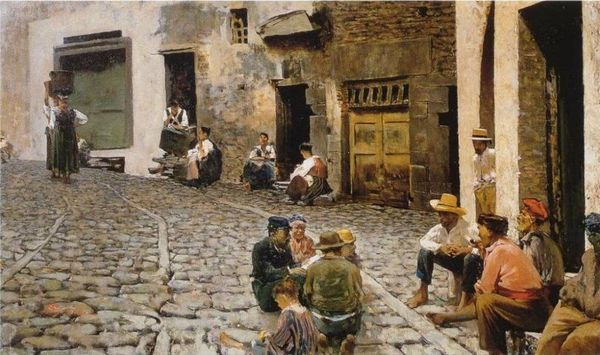
#
graffiti art
#
street view
#
street art
#
oil painting
#
acrylic on canvas
#
street graffiti
#
spray can art
#
urban art
#
painting painterly
#
chaotic composition
Dimensions: 71 x 108 cm
Copyright: Public domain
Editor: Vladimir Makovsky's "The Meal," painted in 1875, captures a seemingly candid moment. The faces in the crowd seem weary, their bodies gathered around simple wooden tables, perhaps finding a brief respite. What social commentary do you see embedded in this scene? Curator: This painting isn't just a snapshot; it's a pointed critique. Makovsky situates this scene of public eating within the larger narrative of social inequality in late 19th-century Russia. Observe the figures – their clothes, their expressions, the very act of eating in public suggests a level of poverty and disenfranchisement. How does the composition itself contribute to this narrative? Editor: I notice the faces, their aged skin seems stretched. Their clothes tattered as they huddle together around small bowls, which creates a sense of shared hardship, but I'm not sure where the "critique" enters in. Curator: Think about who isn't at the table. The painting highlights the absence of those with means, creating a visual statement about class divisions. Makovsky's realist style doesn't shy away from depicting the unvarnished truth of poverty, challenging the viewer to confront uncomfortable realities and implicitly advocating for social change. Consider also, who, at the time, was granted the "privilege" of artistic representation? Editor: That's a powerful point, reframing the scene. So the act of simply depicting these individuals becomes a political statement in itself? Curator: Exactly! It elevates the everyday struggles of the working class, forcing the elite art world to acknowledge their existence and humanity. Furthermore, by showcasing the dignity in their communal meal, Makovsky implicitly critiques the exploitative systems that leave them impoverished. Art can be a mirror and a call to action. What is your takeaway from this intersectional understanding? Editor: I see now how Makovsky used realism to push for social justice, highlighting both class and representation, very insightful! Thank you! Curator: My pleasure. By understanding art's capacity to reflect and shape socio-political consciousness, we gain tools to address contemporary inequality, today!
Comments
No comments
Be the first to comment and join the conversation on the ultimate creative platform.
